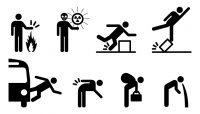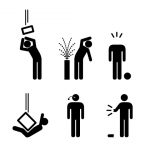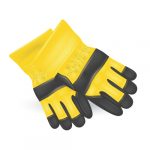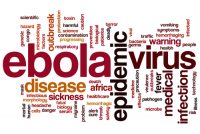Category: Injuries and Illness
Modern safety management goes beyond covering traditional workplace accidents to now being equally concerned with illnesses caused on and even off the job. This section will explain what you need to know to avoid both injuries and illnesses, and to track your progress in reaching this goal.
Free Special REport: Does Your PPE Program Meet OSHA’s Requirements?
Some jobs are just more dangerous than others. It’s fairly obvious, of course, that steelworkers face greater hazards than office workers—but some hazardous jobs might be less obvious. Are your workers in a high-risk occupation? Here’s what the Bureau of Labor Statistics (BLS) has to say about what industries and occupations pose the deadliest hazards.
Some groups of workers are at higher risk of work-related death than others. Do you have any of these high-risk groups in your workplace? And if you do, what are the best strategies for keeping them safe?
Do you know what the leading causes of death are in American workplaces? Each year, the Bureau of Labor Statistics (BLS) tallies the statistics, releasing data from 1 to 2 years in arrears. Despite the delay in reporting, there is a certain consistency from one year to the next: Many of the same hazards remain […]
Ready for some statistics that should make you take a step back? Between 2003 and 2010, 143 workers on road construction sites in the United States died when they were hit by vehicles backing up. And in 2011, 70 workers in all industries were killed in backover accidents.
On January 8, 2013, Xiaobon Cheng was at work at Keeco LLC, a textile manufacturer in Hayward, California, when he was caught between a loading dock and a semi that was backing onto the dock. The 56-year-old Cheng suffered fatal head injuries.
Slips, trips, and falls (STFs) are notorious workplace hazards that cause a lot of injuries and add to costs, productivity losses, and worker absences. Take action against STFs with these 5 strategies.
Off-the-job injuries and fatalities cost the country more than $500 billion, and cost employers more than 200 million lost workdays each year, according to the National Safety Council. And the holidays can be especially damaging, with the upswing in holiday travel and other holiday-related activities. Make sure that when the holidays are over, you get […]
Yesterday, we looked at the range of hazards workers can put their hands into. Today, let’s look at some strategies for controlling hand hazards.
Two tools are essential for almost any job you can think of—your hands. It’s natural, then, that preventing hand injuries should be high on any list of safety priorities. Here’s a handy checklist to help you identify hazards in your workplace that can cause injuries to workers’ hands.
With cases of Ebola happening in the United States and leading the news, employers may be wondering what they can do to prevent the disease in their workplaces. The federal government and some states are issuing guidance to help reduce the chances of transmission of infectious diseases, such as Ebola, from affecting their workers.










